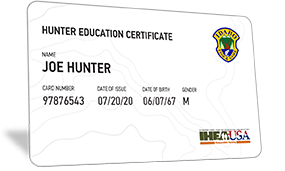
AGE REQUIREMENTS FOR IDAHO HUNTERS
Every hunter in Idaho, who was born on or after January 1st, 1975, is required to complete Hunter Education Certification unless they can provide proof of a previously purchased hunting license from Idaho or another state. Hunters must be 9 years of age or older to get certified.

IDAHO HUNTING EDUCATION REQUIREMENTS
WHAT IS AN IDAHO HUNTER EDUCATION CERTIFICATE
An Idaho Hunter Education Certificate proves that you’ve obtained the knowledge needed to hunt safely, responsibly, and ethically, within the state of Idaho. All hunters in Idaho who were born on or after January 1st, 1975 are required to get certified, unless they can provide proof of a previously purchased hunting license.
WHERE CAN I GET MY IDAHO HUNTER EDUCATION CERTIFICATE?
You can obtain your Idaho Hunter Education Card by completing an Idaho Department of Fish and Game-approved course. Courses can be taken either online or in-person, depending on your preference.
Instructor-Led Course Option
Hunters may choose to complete an instructor-led course to obtain hunter education certification. Classroom courses typically take a minimum of 10 hours to complete and may take place over multiple sessions. Once the student has successfully completed the course and final test they will be issued their Hunter Education Certificate.
Online Course:
Hunters can obtain their Hunter Education Course entirely online if they choose. Online courses typically take about 4-6 hours to complete. Students are issued a Course Completion Certificate upon completion.
HOW OLD DO I HAVE TO BE TO GET A HUNTER EDUCATION CERTIFICATE IN IDAHO?
You must be 9 years of age or older to complete a hunter education course in Idaho, and obtain a Hunter Education Certificate.
Is my Idaho Hunter Education Certificate valid in other states?
The Idaho Hunter Education Certificate will be accepted in any US state, province, or country which also requires mandatory hunter education, meaning hunters who have obtained their Idaho Hunter Education Certificate may use it to hunt in other states. This is known as “reciprocity”.
What's the difference between a Hunter Education Certificate and a Hunting License?
A Hunter Education Card proves that you’ve obtained the knowledge you need to hunt safely and ethically in Idajp, and is different from a Hunting License. The Hunting Licence is similar to a permit, and is required to hunt any game animal within the state. Different licenses and permits may be required depending on which game animal is being hunted.
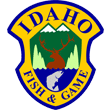
HUNTING LICENSES, STAMPS, AND PERMITS
HUNTING LICENSES
A Hunting License is required in the state of Idaho to hunt any game animal. There are a variety of license types available depending on your age, residency status, and what type of game you plan to hunt. Some of the hunting license types in Idaho include:
Resident Adult Hunting License
This license type is available for Idaho residents. It grants the holder with basic hunting privileges and may be valid for 1 or more years depending on the license type purchased. Lifetime licenses are also available. Hunters may also need to purchase additional licenses, tags, and permits depending on the game animal being hunted.
Combination Sportsman Package
The combination sportsman package is available to Idaho residents and includes all privileges associated with the Resident Adult Combination License, in addition to deer, elk, bear, mountain lion, wolf, turkey, salmon, and steelhead tags. This combination license is popular for hunters and anglers who participate in the sport frequently.
Lifetime Hunting Licenses
There are a variety of lifetime hunting and combination license types available. Lifetime licenses are available to Idaho residents who are ages 2-50. Lifetime license types are popular for avid hunters and anglers in the state who prefer not to purchase annual licenses. For more information on lifetime, license type visit the Idaho Department of Fish and Game website.
IDAHO HUNTER CERTIFICATION AGE REQUIREMENTS

Born on or after January 1st, 1975
All hunters who were born on or after January 1st, 1975 are required to obtain hunter education certification unless they can provide proof of a previously purchased hunting license from Idaho or another state.

Hunter Education Exemptions
- Hunters born prior to January 1st, 1975
- Hunters who have proof of a previously purchased hunting license from Idaho or another state.
For more information on hunter education exemptions visit the Idaho Department of Fish and Game website.
IDAHO HUNTING FAQS
DO I NEED A HUNTING LICENSE TO HUNT WITHIN THE STATE OF PENNSYLVANIA?
Yes. A Hunting License is different from a Hunter Education Certificate and is required for any person who hunts any game animal within the state. This includes both residents and non-residents. Varying licenses must be purchased and carried depending on the hunter’s age, residency, and the type of game being hunted. Certain exceptions may apply depending on the game animal being hunted. For more information on Idaho, hunting licenses visit the Idaho Department of Fish and Game website.
WHAT ARE THE PENNSYLVANIA TAGGING REQUIREMENTS?
Certain game animals must be tagged after they’re taken, including big game animals such as deer, elk, bear, and turkey. It’s important for hunters to understand the tagging and/or harvest reporting requirements for the game animal they’re hunting, and to ensure that the animal is tagged and reported properly.
Tagging Requirements
Upon taking any species that requires a tag to hunt, including all big game species and turkey, the hunter is required to validate the tag and attack it to the carcass. For lion, bear, and wolf the carcass can be attached to the hide. The tag must be attached and validated without delay by completely removing the triangles on the tag which indicate the corresponding day and month of the harvest.
WHAT ARE THE HUNTER ORANGE REQUIREMENTS IN IDAHO?
Hunters in Idaho are required to wear a minimum of 36 square inches of hunter orange, above the waistline, when hunting pheasant where an upland game permit is required. These include hunters Idaho Fish and Game properties and Wildlife Management Areas. Hunter orange requirements also apply on sponsored hunts.
It is strongly encouraged that hunters wear hunter orange when hunting any game animal.
WHAT ARE THE BAG LIMITS IN IDAHO?
Bag limits are imposed on hunters to restrict the number of a particular game animal that can be taken. Bag limits may be daily or seasonal depending on the type of animal. For example, daily bag limits may be imposed which restrict the number of a particular game species which may be taken per hunting day, while seasonal bag limits restrict the number of a particular game animal that may be taken by a hunter within the hunting season.
Bag limits may vary annually depending on game species populations. Hunters must understand and follow bag limit restrictions. Violations may result in fines. For more information on bag limits visit the Idaho Department of Fish and Game website.
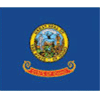
GAME AND NON-GAME SPECIES
GAME SPECIES
There are plenty of game species available to hunt in Idaho. Some of Idaho’s common game species include:
- Big game including white-tailed deer, mule deer, elk, pronghorn, black bear, mountain lion, and wolf.
- Small and upland game including turkey, pheasant, partridge, quail, and crane.
- Waterfowl and other migratory game birds including ducks, geese, and mourning dove.
- Furbearers including beaver, fox, muskrat, badger, marten, otter, bobcat, and mink.
NON-GAME SPECIES
Nongame species in Idaho make up a majority the state’s wildlife and include mammals, birds, fish, reptiles, amphibians, and invertebrates which typically may not be hunted, are considered a nuisance or are protected, endangered, or at risk. There is, unfortunately, a lengthy list of endangered, protected, and threatened species within the state. For more information on nongame, and endangered species within the state visit the Idaho Department of Fish and Game website.
INVASIVE SPECIES
Invasive animals and other pests have been introduced to the United States, including the State or Pennsylvania, and have become a threat to native wildlife. These animals, plants, fish, and invertebrates typically have no natural predators which can result in rapid spread and population growth. This in turn can seriously harm the state’s lands and waters, and can be detrimental to the health and population numbers of a variety of the state’s native plants and animals. Some common invasive species in Pennsylvania include nutria, Africanized honey bee, banded elk bark beetle, and emerald ash borer
In order to protect Idaho’s native plants and animals, invasive species must be controlled and eradicated. Anyone who encounters or suspects that they have encountered an invasive species within the state is encouraged to report the sighting so that it can be monitored and controlled. For information on how to report various types of invasive species in Pennsylvania visit the Idaho Invasive Species page.

PENNSYLVANIA HUNTING SEASONS
Hunting seasons and dates may change annually per game animal, depending on a variety of factors. Season dates are further broken out, region or zone. Additionally, seasons are often categorized by firearm time, including archery, firearms, and muzzleloader or “primitive” firearms seasons.
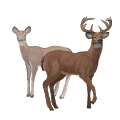
Deer
Deer seasons in Idaho are organized by deer type (antlered vs. antlerless), hunt units, and firearm type. Seasons dates may vary significantly depending on the region in which you’re hunting, and the firearm type permitted. Deer season typically opens with the archery season at the end of August with later seasons closing in late-December.

Bear
Bear seasons are organized by type of firearm, and by hunt unit. Dogs and baiting may be prohibited during some seasons dates or on specific dates, depending on the unit. The spring bear season typically opens in April and closes in June, while the fall season opens at the end of August and closes in October.
Learn more about hunting bear in Idaho.
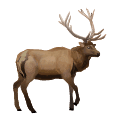
Elk
Elk seasons in Idaho are organized within various zones, and then by hunt unit. Seasons dates may also vary depending on the firearm type. Elk seasons typically opens in August or September and closes in December.
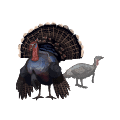
Turkey
Turkey seasons in Idaho are organized within game management units. They include spring, fall, and youth seasons. The type of turkey that hunters are permitted to take may also vary depending on the season. Spring turkey season typically opens in April and closes in May, while the fall season is held from the end of August through to the end of January, depending on the management unit.
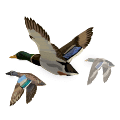
Duck & Goose
Duck and goose seasons are organized by region or “area”, and dates may vary depending on the species being hunted. The season typically opens in September and October, with later seasons closing in February and March of the following calendar year.
HUNTING ON PUBLIC OR PRIVATE LAND
PRIVATE LAND
Much of the land in Idaho is privately owned. Hunters can typically freely take game animals hunted on their own private property, or may seek permission from a landowner to hunt on private property. Hunters who wish to take game on privately owned land must follow state hunting regulations as well as any regulations specified by the landowner. Hunters must ensure they respect the rights and property of the landowner at all times.
PUBLIC LAND
There are millions of acres of accessible lands that are open for hunting in Idaho. The Idaho Department of Fish and Game alone manages more than 370,000 acres of land within Wildlife Management Areas, in addition to millions of acres which have been made available through agreements with landowners and lease program.
Public and state-managed lands are open to a variety of outdoor recreational activities including hunting, angling, wildlife watching, and hiking. Hunters accessing these lands to take game should keep in mind that specific rules and regulations may apply within the areas to ensure continued access to these properties. Hunters are responsible for knowing and understanding the rules and regulations that apply on public land.
For more information on the rules and regulations that apply to hunters and other recreational users of state lands, visit the Idaho Department of Fish and Game Hunting and Fishing Access page.
WILDLIFE MANAGEMENT AREAS
Hunting in Idaho’s Wildlife Management Areas
There are 31 Wildlife Management Areas (WMAs) within the state of Idaho that are managed by the Idaho Department of Fish and Game. These lands encompass a total of 370,000 acres of space and are managed and controlled to ensure wildlife and habitat conservation, based on the need of the wildlife within the area.
These areas provide a wide variety of opportunities for hunters and are home to a wide range of game species. For more information on Idaho’s WMAs and publically accessible hunting, visit the Idaho Department of Fish and Game Hunting and Fishing Access page.
WMA Regulations
Hunters should keep in mind that special rules and regulations may apply when hunting within Wildlife Management Areas. Restrictions and regulations may vary per WMA. Some of these regulations may include.
- Visting and hunting hour restrictions
- Motorized recreational vehicle restriction
- Camping area restrictions
- Restrictions on the use of dogs
- Baiting and take method restrictions
The Gem State. Ready and rarin’ to go.

Where to Hunt in Idaho
Idaho’s landscape is rugged and diverse and features some of the largest unspoiled natural areas in the United States, including the Frank Church-River of No Return Natural Area which features more than 2 milli0on acres of protected wilderness. This monstrous wilderness area also features hunting opportunities for deer, mountain goat, bighorn sheep, bear, and mountain lion, in addition to a variety of small game, game birds, and waterfowl.
Not only does Idaho have a massive amount of wilderness and natural space for hunters to explore and track game, but there are also a large number of game species. One of the most popular game species to hunt in the state is Elk. With more than 100,000 elk roaming the state there are plenty of opportunities to harvest one (or more) and fill your freezer. For your best chances, head to the south-west region of the state towards Elmore County where elk harvest numbers are consistently high. Nearby public hunting areas include the C. J. Stike WMA, and the Sawtooth National Forest.
The Gem State also boats plenty upland game hunting opportunities – the state is home to three species of forest grouse including dusky, ruffed, and spruce grouse. Top counties for grouse include Power and Oneida counties – hunters can seek out their flighty prey at the Curlew National Grassland which features over 45,000 acres of land and plenty of upland game, rabbit, and waterfowl.
